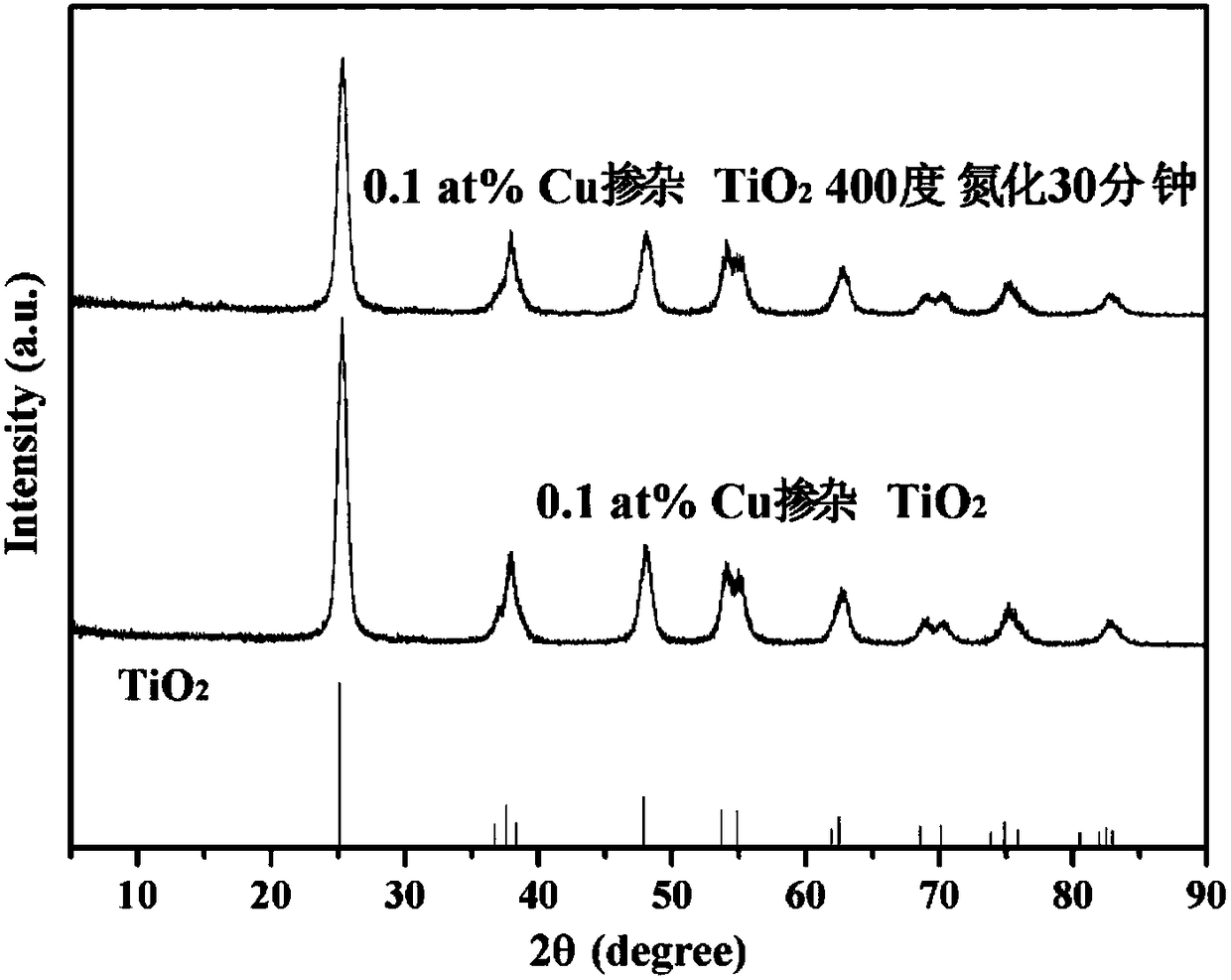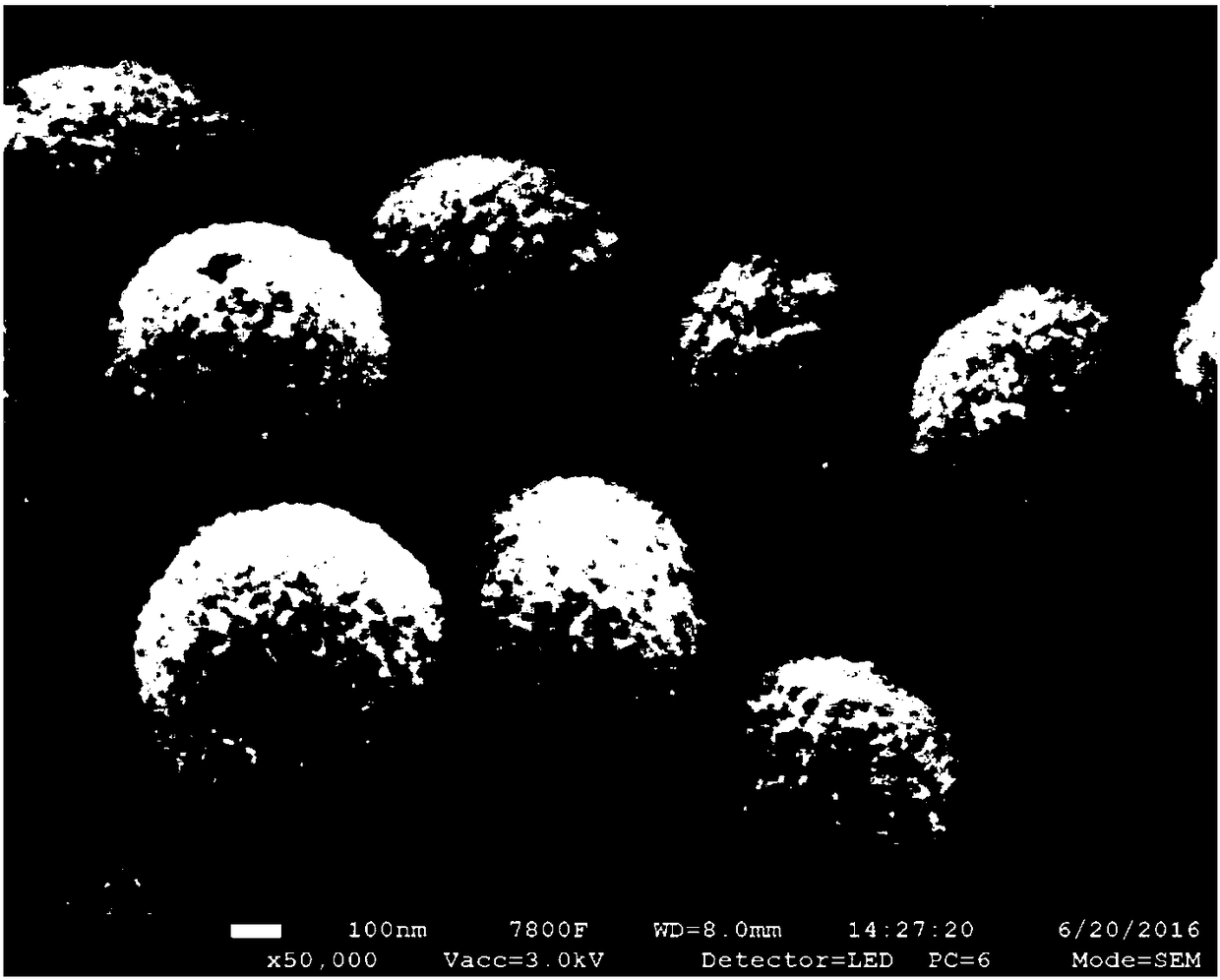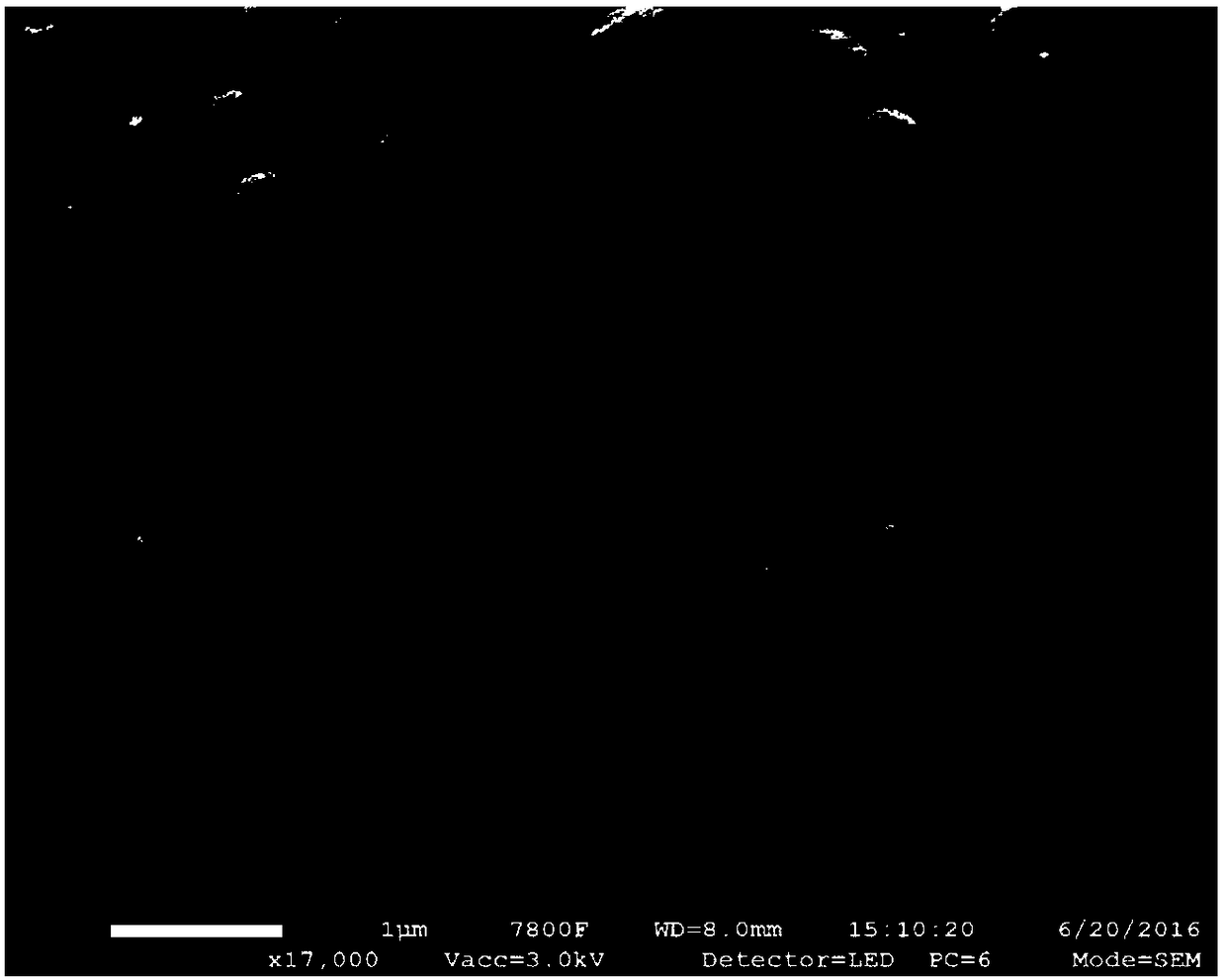Preparation method of meso-porous surface defect Cu-N-TiO2 microsphere photocatalytic material
A photocatalytic material, cu-n-tio2 technology, applied in chemical instruments and methods, physical/chemical process catalysts, metal/metal oxide/metal hydroxide catalysts, etc., can solve the problem of increasing recombination probability and catalytic efficiency , Unfavorable problems such as photogenerated holes or electron migration and separation, to achieve high visible light photocatalytic efficiency, improve absorption, and improve photocatalytic performance
- Summary
- Abstract
- Description
- Claims
- Application Information
AI Technical Summary
Problems solved by technology
Method used
Image
Examples
Embodiment 1
[0026] At room temperature, fully dissolve 1.98 g hexadecylamine in 200 ml ethanol, stir magnetically, add copper chloride ethanol solution, and add 1.6 ml deionized water at the same time, adjust the magnetic stirrer speed to 200 r / min, press Cu and The molar ratio of Ti is 0.1 / 100, titanium isopropoxide is added, and after stirring for 30 s, the solution is left to settle for 18 h. The precipitated product was washed three times with ethanol and deionized water respectively, dried and ground into powder; the powder was transferred to a 100 ml stainless steel high-temperature and high-pressure reactor with polytetrafluoroethylene lining, and 40 ml of ethanol and 20 ml of Water, placed in a muffle furnace for hydrothermal reaction at 160 °C for 18 h, then cooled to room temperature, the resulting product was washed three times with water and absolute ethanol to remove possible residual impurities, centrifugally filtered, and vacuum-dried at 60 °C, The dried product was calcine...
Embodiment 2
[0028] At room temperature, fully dissolve 1.98 g hexadecylamine in 200 ml ethanol, stir magnetically, add copper chloride ethanol solution, and add 1.6 ml deionized water at the same time, adjust the magnetic stirrer speed to 200 r / min, press Cu and The molar ratio of Ti is 0.01 / 100, titanium isopropoxide is added, and after stirring for 30 s, the solution is left to settle for 12 h. The precipitated product was washed three times with ethanol and deionized water respectively, dried and ground into powder; the powder was transferred to a 100 ml stainless steel high-temperature and high-pressure reactor with polytetrafluoroethylene lining, and 40 ml of ethanol and 20 ml of Water, placed in a muffle furnace for hydrothermal reaction at 180 °C for 14 h, then cooled to room temperature, the resulting product was washed three times with water and absolute ethanol to remove possible residual impurities, centrifugally filtered, and vacuum-dried at 60 °C. The dried product was calcin...
Embodiment 3
[0030] At room temperature, fully dissolve 1.98 g hexadecylamine in 200 ml ethanol, stir magnetically, add copper chloride ethanol solution, and add 1.6 ml deionized water at the same time, adjust the magnetic stirrer speed to 300 r / min, press Cu and The molar ratio of Ti is 0.02 / 100, titanium isopropoxide is added, and after stirring for 30 s, the solution is left to settle for 12 h. The precipitated product was washed three times with ethanol and deionized water respectively, dried and ground into powder; the powder was transferred to a 100 ml stainless steel high temperature and high pressure reactor with polytetrafluoroethylene lining, and 45 ml ethanol and 15 ml Water, placed in a muffle furnace for hydrothermal reaction at 180 °C for 14 h, then cooled to room temperature, the resulting product was washed three times with water and absolute ethanol to remove possible residual impurities, centrifugally filtered, and vacuum-dried at 60 °C. The dried product was calcined at ...
PUM
| Property | Measurement | Unit |
|---|---|---|
| size | aaaaa | aaaaa |
Abstract
Description
Claims
Application Information
 Login to View More
Login to View More - R&D
- Intellectual Property
- Life Sciences
- Materials
- Tech Scout
- Unparalleled Data Quality
- Higher Quality Content
- 60% Fewer Hallucinations
Browse by: Latest US Patents, China's latest patents, Technical Efficacy Thesaurus, Application Domain, Technology Topic, Popular Technical Reports.
© 2025 PatSnap. All rights reserved.Legal|Privacy policy|Modern Slavery Act Transparency Statement|Sitemap|About US| Contact US: help@patsnap.com



